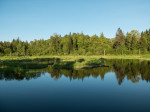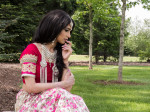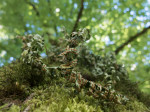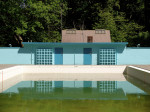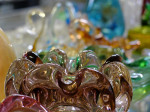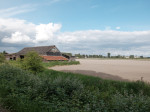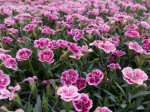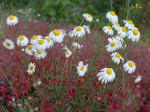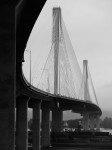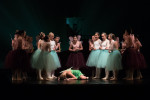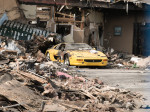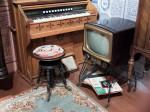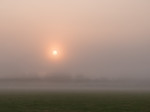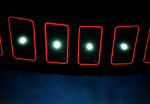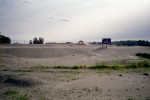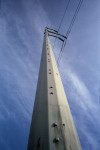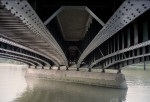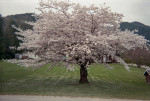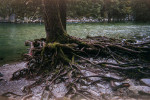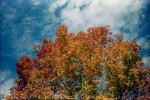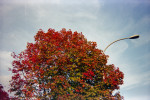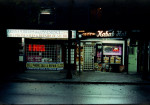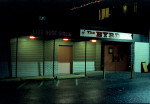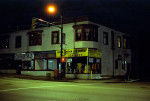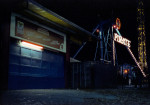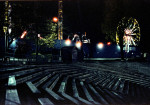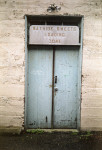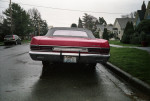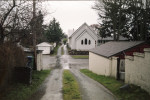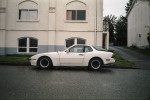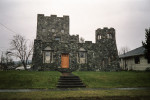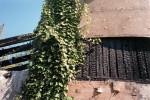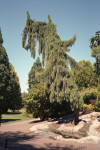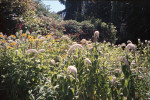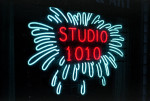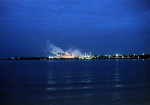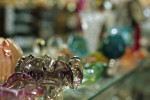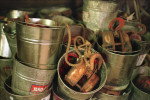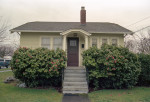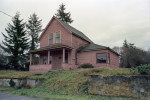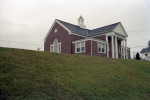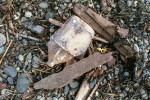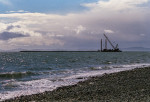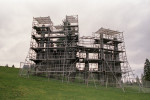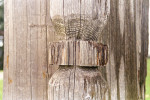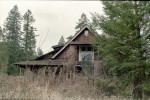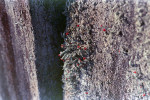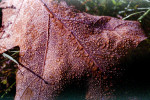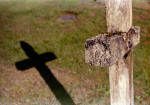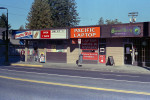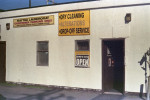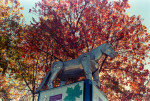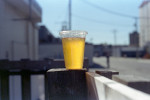Feb
26
2017
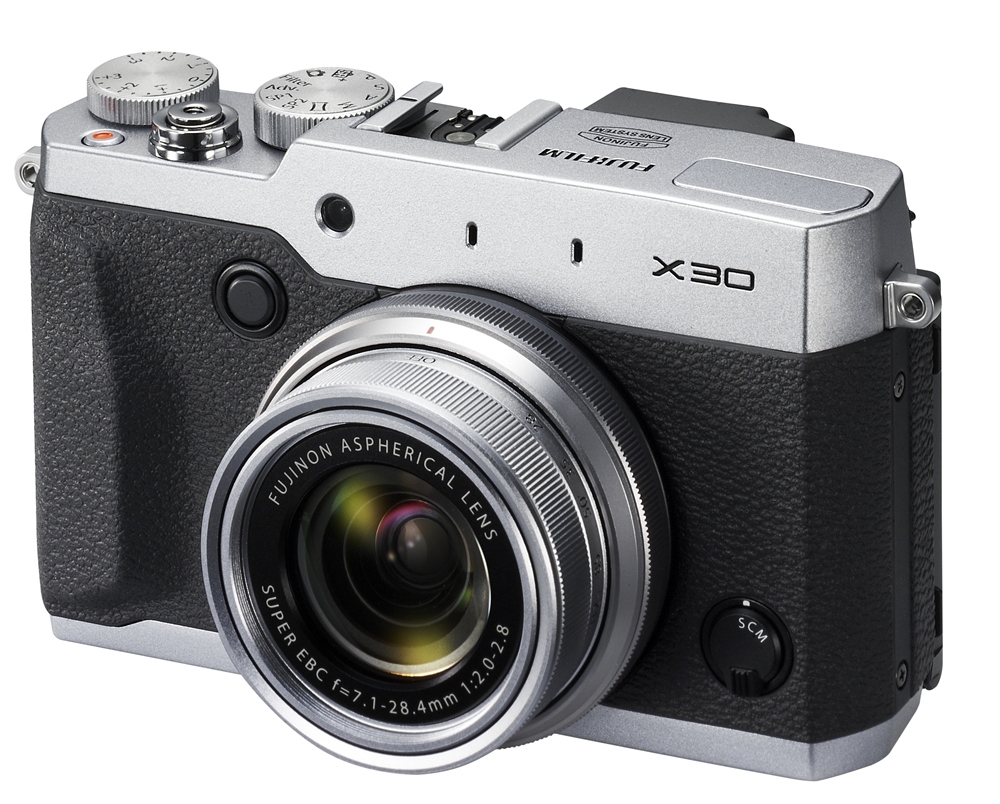
In 2016 I had an opportunity to take a fantastic trip to Paris and London and really wanted a small point and shoot camera that was up to the task. My previous camera that would have fit this bill was the Nikon P7000 but it’s getting old for a digital camera and resets itself every time the battery is removed. As well sensor technology has also improved in the interim primarily in low light. I wont go through all the choices I considered but the Fujifilm X30 was only ever an outside consideration as I was looking at the newly released Panasonic Z100 and the Sony RX100 IV both of which cost more than $1000. By chance however the local camera store (actually a pharmacy and the last camera outlet standing) was having a small camera show with representatives from different manufacturers and dealers. Among these was Fujifilm with some wonderful new cameras and lenses as well as the X30 which was approaching 2 years old and being discontinued. In addition it had the same lens and sensor and processor as the previous model the X20 making the camera seem a little dated. But then there was the price when all was said and done it cost only about 1/3 of the Sony. So aside from the price what other feature would prompt me to forgo buying the best camera I could afford? Well there is the form factor, it’s a nice camera to hold and with all the external dials its easy to use without the need to hunt through menus. 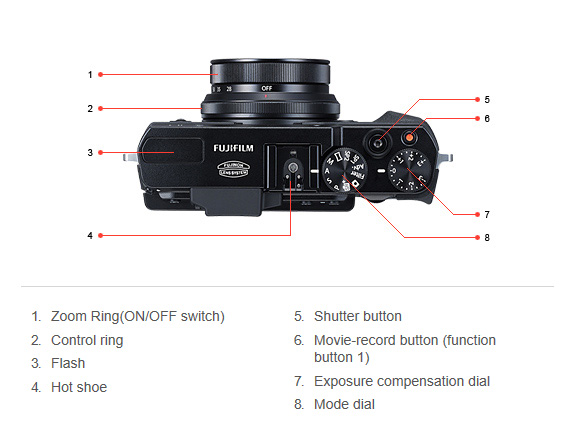 And the 2.360K-dot OLED viewfinder. I’ve never liked EVFs but when I looked through this one I had to admit that it was very good and is a pleasure to use.
And the 2.360K-dot OLED viewfinder. I’ve never liked EVFs but when I looked through this one I had to admit that it was very good and is a pleasure to use. 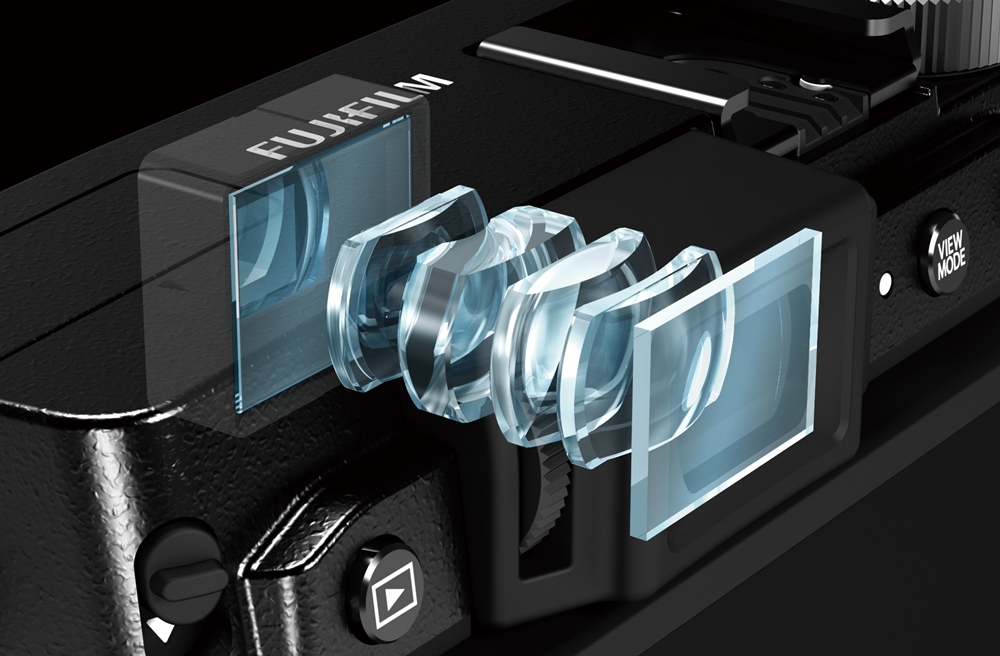 It is large and clear and provides useful information and most importantly for me it did not suffer from lag in low light. In fact Fujifilm claims that the refresh rate is 0.005 of a second. I find that if I pan and the image doesn’t refresh fast enough it causes mild nausea which is not conducive to enjoying photography, one of the main reasons I prefer optical viewfinders. But the X30 viewfinder excels I’m not going to list off the features and specifications of the X30 those are easily found online but rather try to explain where the camera excels and where it does not.
It is large and clear and provides useful information and most importantly for me it did not suffer from lag in low light. In fact Fujifilm claims that the refresh rate is 0.005 of a second. I find that if I pan and the image doesn’t refresh fast enough it causes mild nausea which is not conducive to enjoying photography, one of the main reasons I prefer optical viewfinders. But the X30 viewfinder excels I’m not going to list off the features and specifications of the X30 those are easily found online but rather try to explain where the camera excels and where it does not.
The first thing to be addressed is its ISO range and in particular noise at higher settings. I ran a few tests and as expected it was not a particularly good performer at higher ISO settings. Here is a crop from one test comparing ISO 100 to ISO 800.

So during this testing I determined that ISO 1600 was the upper limit that I was comfortable using to achieve results that I could live with but that limiting it to under ISO 800 was preferable. This is not state of the art territory but it’s also not like you can not take pictures at those values especially given the X30 lenses F2.0-f2.8 maximum aperture.
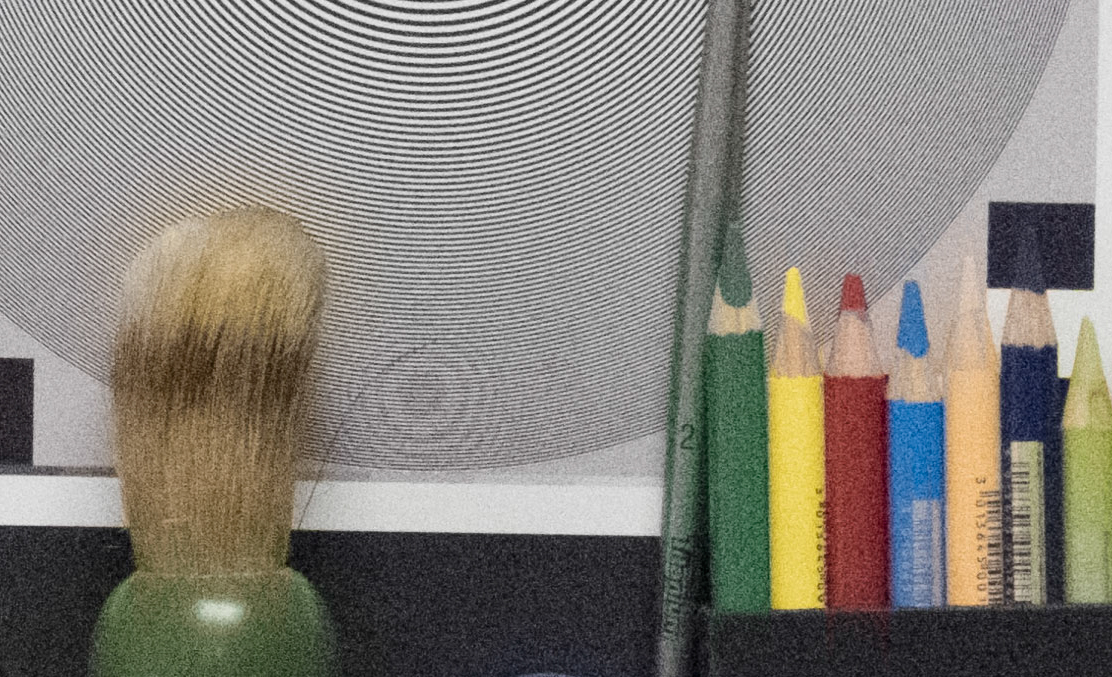
For reference this is what a 100% crop at 3200 ISO looks like without noise reduction. Not useable for me.
The focal range of the lens 7.1-28.4mm yields an angle of view for its sensor that is equivalent to 28-112mm in 35mm terms. While I like 28mm and use it often it would have been nice to have a somewhat wider lens such as 24mm.
Over the next little while I used the X30 when ever I could in order to see how well it performed. What I found was that it was a well laid out camera with good autofocus that produced nice images, what more can you expect. Well larger files such as 20mpixel rather than 12mpixel would be nice and better low light performance would be good. However if you stay within the boundaries of where the X30 works well it is a good all around point and shoot. The X30 also excels at close focus photography as well allowing images taken as close as 1cm to the lens in ‘Super Macro’ mode.  One other minor issue was the movie record button, I find myself hitting it inadvertently far too often ending up with useless short video clips and sometimes a missed photograph. It wasn’t the only digital camera I took and I tended to only use it when traveling as light as possible such as inside museums, a place where it isn’t the strongest.
One other minor issue was the movie record button, I find myself hitting it inadvertently far too often ending up with useless short video clips and sometimes a missed photograph. It wasn’t the only digital camera I took and I tended to only use it when traveling as light as possible such as inside museums, a place where it isn’t the strongest.
Fuji has discontinued the X30 as I mentioned and the have not signaled that there will be a replacement. Nikon has also decided to stop development of their DL series of compacts before they ever made it to market. The point and shoot camera market is practically dead and even the high end compact market which the X30 sat in is limited with Sony and Panasonic dominating that segment with a few exceptions.
What follows are some images from prior to my trip as I tested the Fuji X30 in an other post I will share some of the images from the trip.
no comments | posted in Cameras, Photography, Uncategorized
Feb
17
2017

In a previous post I lamented the light leak I had with my Ricoh R1 and how I went about addressing it. Well here are some images from after the seal transplant. One of the ironies is that the images with the light leaks have proved to be more popular on Instagram than ones from the same camera without leaks. One thing that light leaks should do is subtlety remind the viewer of an image that they are looking at a photograph that is a representation of reality not reality itself.
no comments | posted in Cameras, Photography
Feb
2
2017
I can’t resist a cheap camera and a cheap camera with film in it is even better. It isn’t unusual to find disposable cameras in a bin at thrift store often for $1 to $2. The results are unpredictable but it is film so what else are you going to do.
One of those what else can you do is to recover the film for use in another camera. Disposable cameras tend to have the film wound out and as you expose each frame it is pulled into the canister. So if you cover the lens with something opaque or perform this in complete darkness. You can advance the film until it is entirely back into the canister and then break the camera open to recover the film. You then need to pull the film out of the canister 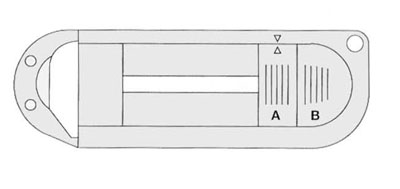
( I use an Arista film leader recovery tool). I did this recently with a disposable camera that said made in China with film made in Italy. I found they had used an old Kodak film canister to wind the film onto and then just put a new label over it.
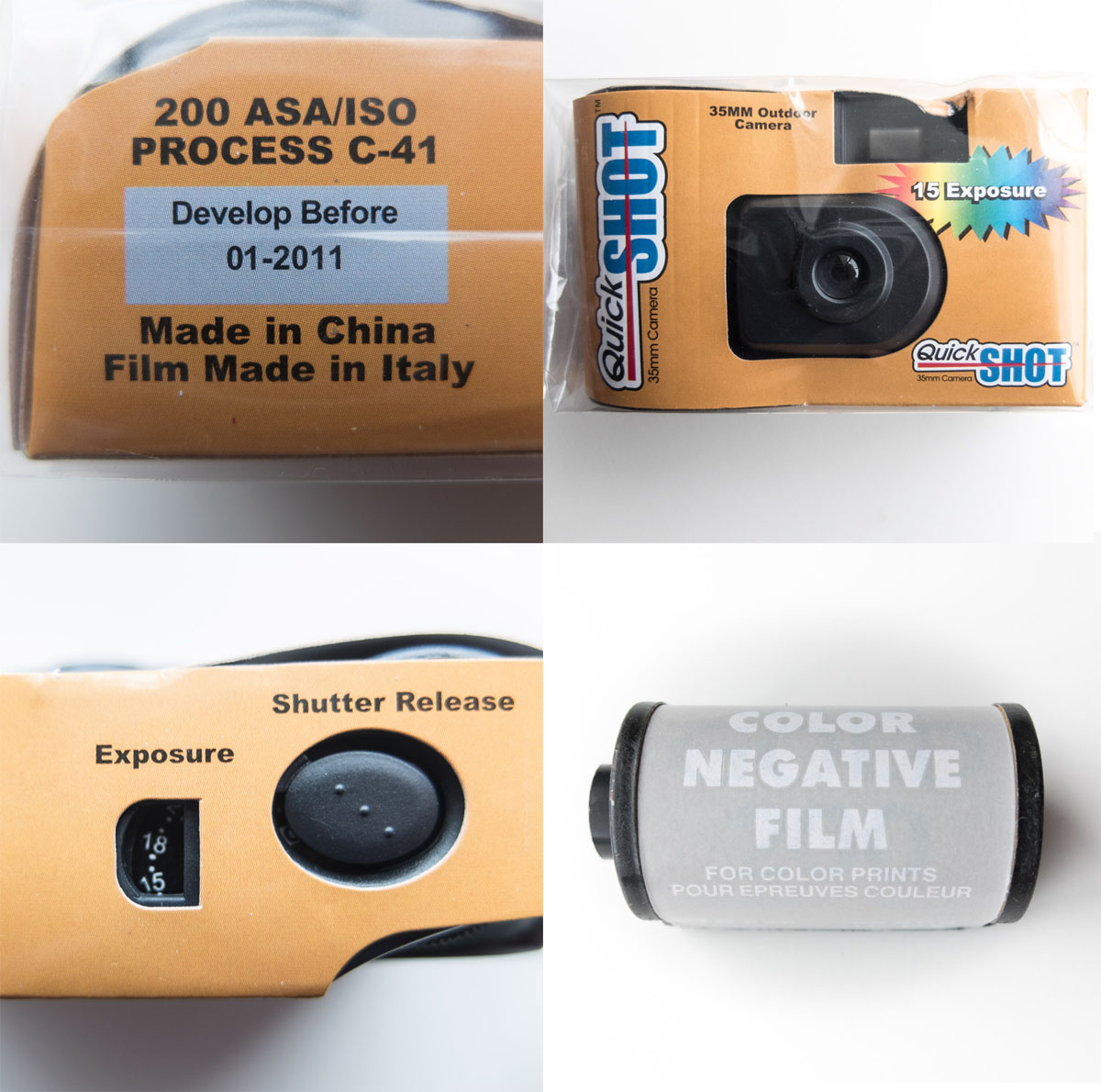
It should be interesting to see how this plays out. However what follows is images shot right in a Fuji disposable camera.
1 comment | posted in Cameras, Photography, Uncategorized
Jan
22
2017

As I have posted previously I really like using the Canon A1 for taking long low light exposures and I also like the halo around light sources that Cinestill 800 provides. So I keep pairing these two up like they are a couple.
One issue that has come up for me is the remnants of the ramjet removal has reared its head several times. It’s primarily seen in darker images. For this reason I will need to rethink the way I expose and scan this film. I’ve tended to perhaps under expose at times with the intention of highlighting lights in the scene but when scanned this seems to reveal the residue of the remjet. I had a particularly egregious example of this that Cinestill remedied by sending me replacement rolls
As I haven’t seen this issue from other users of the film I now have to conclude it is something I am doing. No other film is effected this way during my processing so it leaves me to believe that it is always there to a degree its just a matter of the ratio of it to the recorded image on the negative. If during scanning your trying to extract details from a thin negative then it is likely going to show. Because I still want to continue to use it for nocturnes I am going to increase the amount of exposure I do and see if I get a better result.

It can be much worse than shown in the above image as well. But when it does work out I have been pleased with the look.
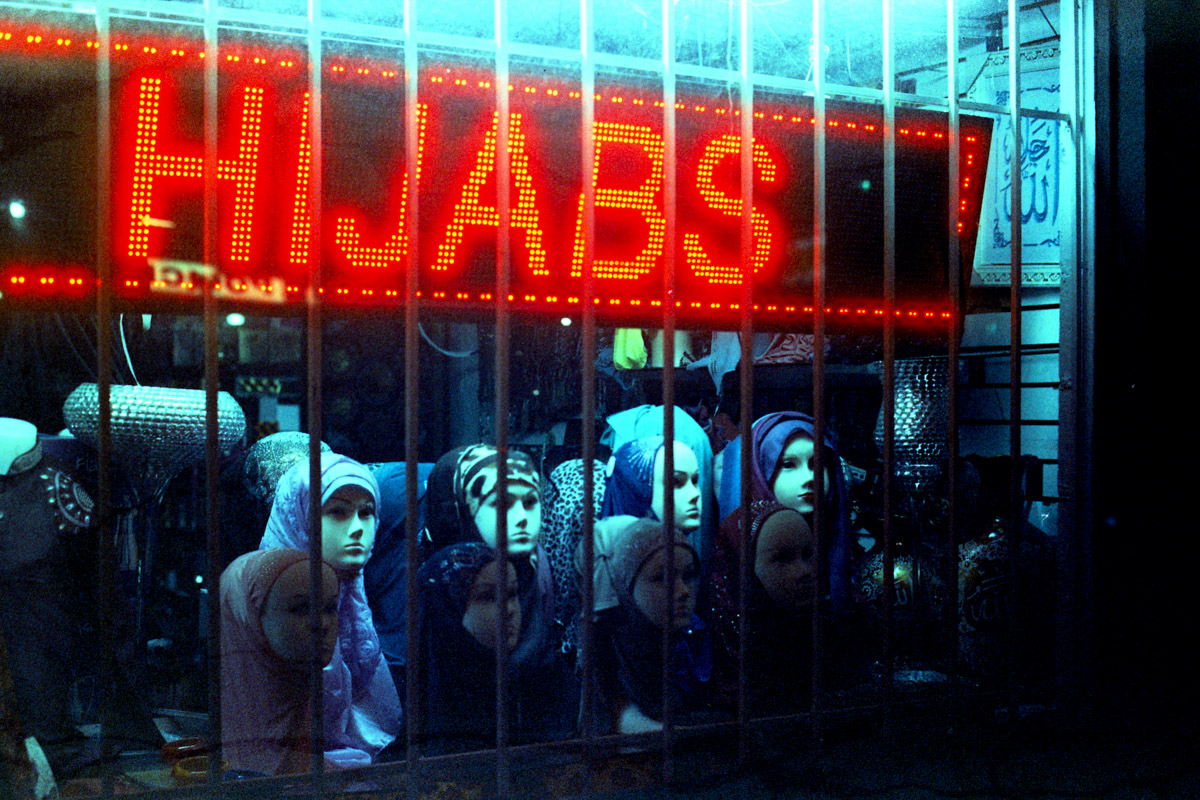
Some more images from the same roll
1 comment | posted in Cameras, Photography, Processing
Jan
3
2017

Throwing a Yashica Ninja Star isn’t likely to accomplish much other than a pile of broken plastic. Taking pictures with a Yashica Ninja Star is not much better. The Ninja Star is the sort of camera you might have expected to see on a late night informercial in the early 1990s. ‘But wait that’s not all you get not one but two focal lengths!’
Those focal lengths are 35mm and with extra elements 55mm. Two focal lengths are not the only limitation of the camera, the maximum apertures are a none to bright f5.6 and f8.5 and its DX coding is designed to read only ASA 100-400.
Like other nondescript plastic cameras of its era though if you throw some film in it your going to get something it’s just a question of what. It so happens that the lens on the Ninja Star while not great doesn’t embarrass itself even at both focal lengths.
It’s also nice that it takes AA batteries rather than an expensive lithium one.
no comments | posted in Cameras, Photography
Dec
17
2016
After years of problem free photography with various Olympus Stylus Epics a string of photographic bad luck befell me. Specifically I had two Stylus Epics exhibit light leaks and this at a time when I wanted a good one for an upcoming trip. Luckily I had a champagne coloured Epic DLX so I quickly ran a roll of film through it and had it developed at the local drug store. Well I seem to have gotten lucky because all the images turned out leak free. The final proof though will be when I develop the film that I shot through it in Paris and London.
no comments | posted in Cameras, Photography
Dec
10
2016

Everything in the world of film happens at a little bit of a slower pace and so this is my response to the release of the Nikon D5 DSLR. Twenty years ago in 1996 the F5 was the state of the art in SLR’s and I imagine that the D5 is intended to hold the same place within modern DSLR’s. Both were released to coincide with Summer Olympics. There are many technological elements from the F5 that a photographer would find are familiar today.
I thought it would be fun to do a little comparison of the features of each camera that can be matched up.

Beyond these it can get a little silly to continue the comparison as so many of the advancements are related to digital capture. The most obvious being the fact that the D5 shoots video.
The point of even starting the comparison though is to illustrate just how advanced the F5 was as a film camera and if you compare it against its first Digital camera competitors it holds up even better.
One thing about one camera: While you can rewind the film in a Nikon F5 by hand with the little crank it offered a power rewind through a sequence of procedures that feels more like the opening of a secret passage way leading to treasure. First open the cryptic film rewind cover then press the mystical button hidden within. Next turn the mysterious film rewind lever counter clockwise while pressing the secret lock release. Then and only then will the treasure be reveled or the film will rewind in a matter of seconds.

no comments | posted in Cameras, Photography
Nov
26
2016
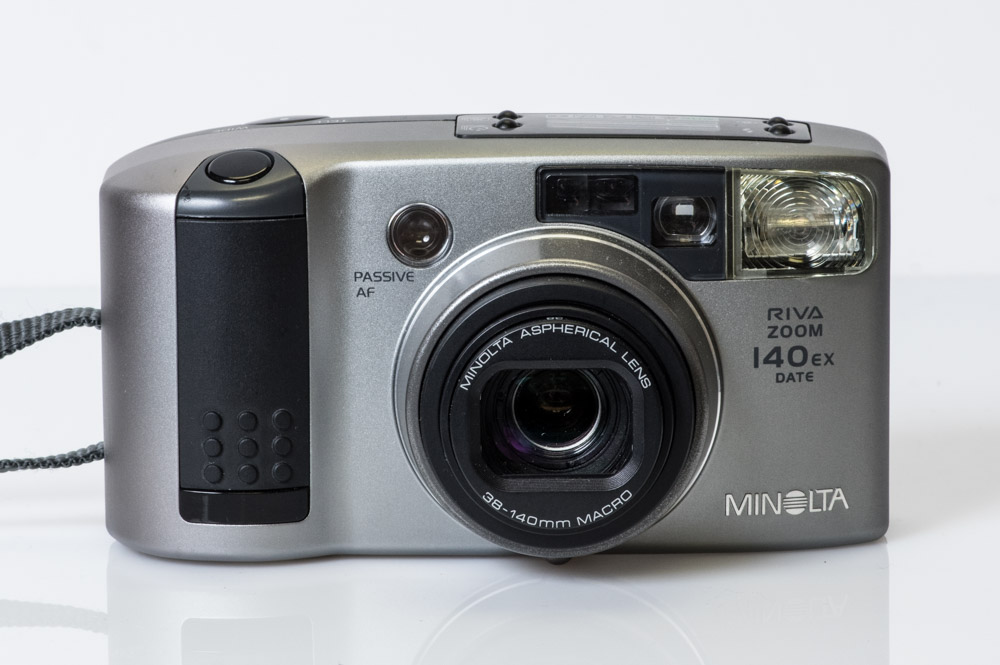 Despite their best efforts no camera manufacturer ever achieved a long zoom point and shoot film camera that provided exceptional lens performance across the entire frame and good light gathering ability. It really would be asking a lot: compact, light, fast, control of distortion, no vingetting, sharp. Those are a lot of factors to consider. You can not have your cake and eat it too, there is a reason for SLR’s and large fast corrected lenses. Even so this was a pretty good attempt by Minolta to provide a versatile camera with a quality lens. The 38-140mm f3.5-9.4 has 8 elements in 7 groups and shows little vignetting and good consistent image quality at all zoom settings across the entire frame. When set to macro it will focus down to 1.6ft.
Despite their best efforts no camera manufacturer ever achieved a long zoom point and shoot film camera that provided exceptional lens performance across the entire frame and good light gathering ability. It really would be asking a lot: compact, light, fast, control of distortion, no vingetting, sharp. Those are a lot of factors to consider. You can not have your cake and eat it too, there is a reason for SLR’s and large fast corrected lenses. Even so this was a pretty good attempt by Minolta to provide a versatile camera with a quality lens. The 38-140mm f3.5-9.4 has 8 elements in 7 groups and shows little vignetting and good consistent image quality at all zoom settings across the entire frame. When set to macro it will focus down to 1.6ft.
It’s now 20 years since this camera first came out and photography has obviously moved on so the question needs to be asked if there is any point to a point and shoot like this. The answer is yes the Minolta Riva Zoom 140EX is one of the best long zoom point and shoots. It’s a large camera for it’s type but the lens is just that little bit faster than it’s competitors.
no comments | posted in Cameras, Photography
Nov
12
2016
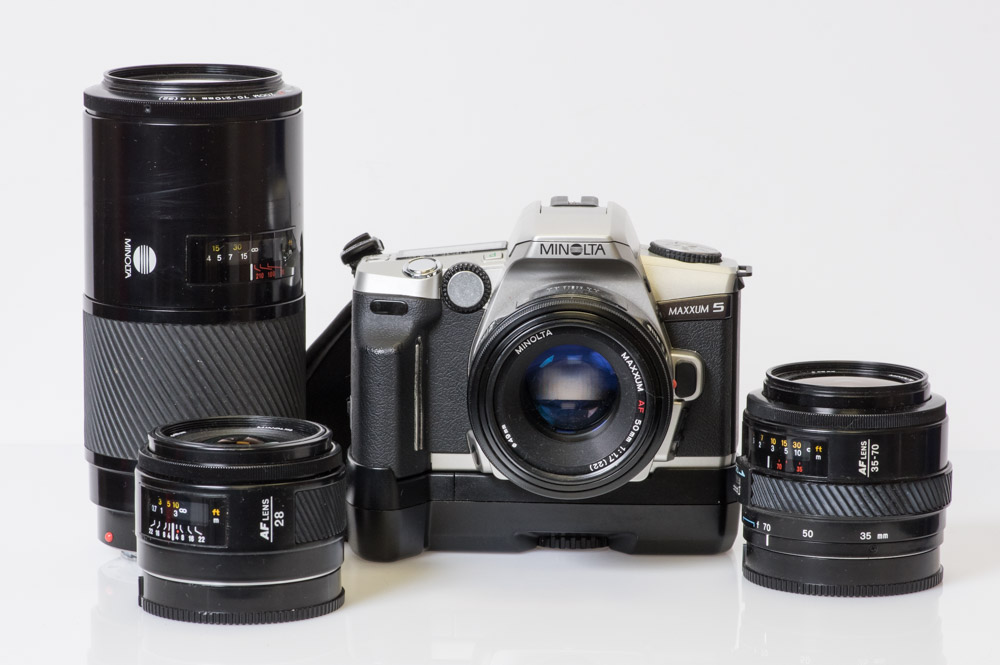
As each year passes and shooting film becomes more and more of a niche activity certain cameras and their lenses continue to decrease in price. Its for this reason that I am able to build camera kits around a camera or a lens mount for less money than any one of the separate parts once cost. Before I ever considered doing this I had my Minolta X700 which I was very fond of and while using it for the most part I ignored the autofocus camera world. So while I had Minolta lenses none of them would be compatible with this camera with its A-mount and autofocus. Over the last several years though, as I’ve picked up various other cameras mostly fixed lens point and shoots and rangefinders, I’ve added to this Minolta kit. However I had never shot with it until now. While it would be nice to have a few more lenses its certainly enough for most photography.
So the lenses that I have for my A-mount kit are: 28mm f2.8 , 35-70mm f4, 50mm f1.7 , 70-210mm f4 a good general set of lenses two primes and two zooms from 28mm to 210mm.
The Maxxum 5 is a well rounded, if somewhat cheap, SLR with plenty of controls but it’s really all about the lenses. The autofocus system has 7 points that illuminate in the viewfinder it struggles in low light but I’ve found that it is quite accurate. The film used here was Agfa 400 which turned out a little extra grainy possibly because I pushed the number of rolls I developed with that chemistry a little too far.
no comments | posted in Cameras, Photography
Oct
30
2016

The Pentax SPII or Spotmatic II is a well built mechanical SLR and because it uses the ubiquitous M42 thread for its lens mount there are a multitude of old lenses that can be used with it. You could try to find a solution for the fact that it originally used 1.35V mercury cell batteries including using newer 1.5V silver batteries but I personally don’t even bother with a battery. With its completely mechanical shutter you can measure with a hand held meter or digital camera and then just set the aperture and shutter speed as needed.
The Spotmatic cameras are minimalist in their design but also very attractive in my opinion.
no comments | tags: Kodak, Pentax | posted in Cameras, Photography
 And the 2.360K-dot OLED viewfinder. I’ve never liked EVFs but when I looked through this one I had to admit that it was very good and is a pleasure to use.
And the 2.360K-dot OLED viewfinder. I’ve never liked EVFs but when I looked through this one I had to admit that it was very good and is a pleasure to use.  It is large and clear and provides useful information and most importantly for me it did not suffer from lag in low light. In fact Fujifilm claims that the refresh rate is 0.005 of a second. I find that if I pan and the image doesn’t refresh fast enough it causes mild nausea which is not conducive to enjoying photography, one of the main reasons I prefer optical viewfinders. But the X30 viewfinder excels I’m not going to list off the features and specifications of the X30 those are easily found online but rather try to explain where the camera excels and where it does not.
It is large and clear and provides useful information and most importantly for me it did not suffer from lag in low light. In fact Fujifilm claims that the refresh rate is 0.005 of a second. I find that if I pan and the image doesn’t refresh fast enough it causes mild nausea which is not conducive to enjoying photography, one of the main reasons I prefer optical viewfinders. But the X30 viewfinder excels I’m not going to list off the features and specifications of the X30 those are easily found online but rather try to explain where the camera excels and where it does not. One other minor issue was the movie record button, I find myself hitting it inadvertently far too often ending up with useless short video clips and sometimes a missed photograph. It wasn’t the only digital camera I took and I tended to only use it when traveling as light as possible such as inside museums, a place where it isn’t the strongest.
One other minor issue was the movie record button, I find myself hitting it inadvertently far too often ending up with useless short video clips and sometimes a missed photograph. It wasn’t the only digital camera I took and I tended to only use it when traveling as light as possible such as inside museums, a place where it isn’t the strongest.


